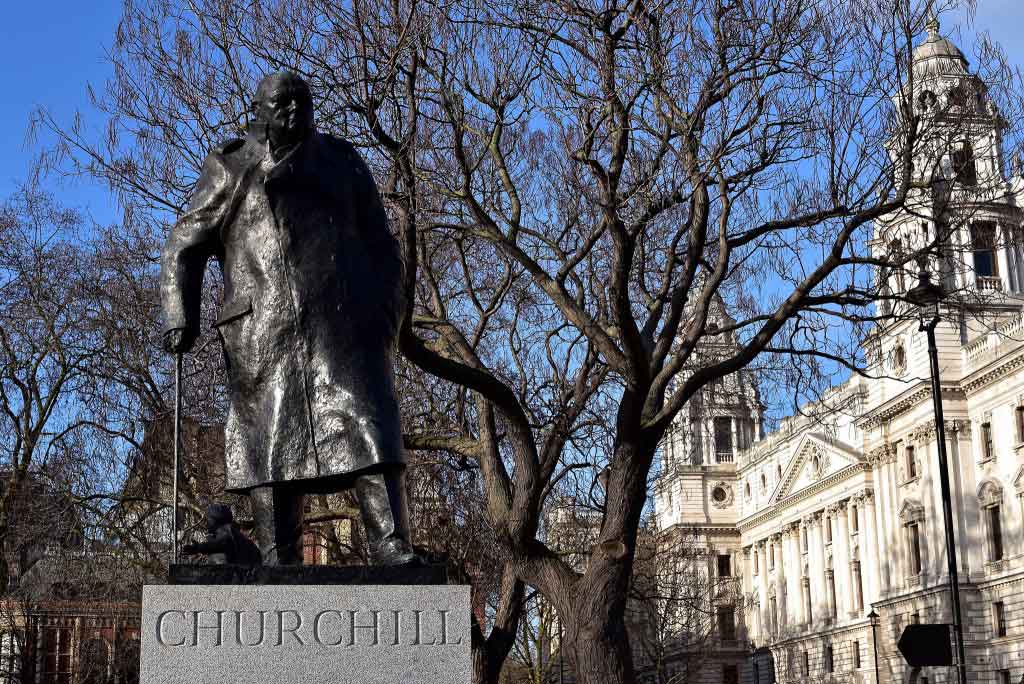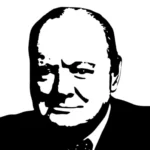
Finest Hour 189
Scotland’s Real Strength

Winston Churchill, Parliament Square, London © Sue Lowry & Magellan PR
October 4, 2020
Finest Hour 189, Third Quarter 2020
Page 19
By Winston S. Churchill
In the first volume of A History of the English-Speaking Peoples, Winston Churchill surveys the final two centuries of medieval Scottish history, when internal strife and periodic battles with England afflicted the lives of many generations, and identifies the true foundation of Scotland’s emergent power.
The disunity of the [Scottish] kingdom, fostered by English policy and perpetuated by the tragedies that befell Scottish sovereigns, was not the only source of Scotland’s weakness. The land was divided, in race, in speech, and in culture. The rift between Highlands and Lowlands was more than a geographical distinction. The Lowlands formed part of the feudal world, and, except in the SouthWest, in Galloway, English was spoken. The Highlands preserved a social order much older than feudalism. In the Lowlands the King of Scots was a feudal magnate; in the Highlands he was the chief of a loose federation of clans. He had, it is true, the notable advantage of blood kinship both with the new Anglo-Norman nobility and with the ancient Celtic kings. The Bruces were undoubted descendants of the first King of Scots in the ninth century, Kenneth MacAlpin, as well as of Alfred the Great; the Stuarts, claimed with some plausibility, to be the descendants of MacBeth’s contemporary, Banquo. The lustre of a divine antiquity illumined princes whose pedigree ran back into the Celtic twilight of Irish heroic legend. For all Scots, Lowland and Highland alike, the royal house had a sanctity which commanded reverence through periods when obedience and even loyalty were lacking, and much was excused those in whom royal blood ran.
But reverence was not an effective instrument of government. The Scottish estates did not create the means of fusion of classes that were provided by the English Parliament. In law and fact feudal authority remained far stronger than in England. The King’s justice was excluded from a great part of Scottish life, and many of his judges were ineffective competitors with the feudal system. There was no equivalent of the Justice of the Peace or of the Plantagenet justices in eyre.
Over much of the kingdom feudal justice itself fought a doubtful battle with the more ancient clan law. The Highland chiefs might formally owe their lands and power to the Crown and be classified as feudal tenants-in-chief, but their real authority rested on the allegiance of their clansmen. Some clan chiefs, like the great house of Gordon, in the Highlands, were also feudal magnates in the neighboring Lowlands. In the west the rising house of Campbell played either role as it suited them. They were to exercise great influence in the years to come.

2025 International Churchill Conference
Meanwhile the Scots peasant farmer and the thrifty burgess, throughout these two hundred years of political strife pursued their ways and built up the country’s real strength in spite of the numerous disputes among their lords and masters. The Church devoted itself to its healing mission, and many good bishops and divines adorn the annals of medieval Scotland. In the fifteenth century three Scots universities were founded, St. Andrew’s, Glasgow, and Aberdeen—one more than England had until the nineteenth century.
Subscribe
WANT MORE?
Get the Churchill Bulletin delivered to your inbox once a month.



